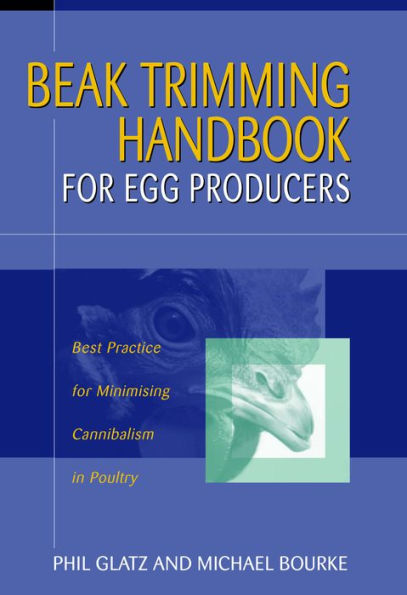The Beak Trimming Handbook for Egg Producers is a straightforward, practical guide to beak trimming of egg-laying hens to minimise cannibalism. It provides comprehensive information on why birds peck and how pecking can lead to problems like cannibalism; the methods available to beak trim birds; why a particular method should be chosen; and at what age birds may be trimmed.
The book addresses quality control of beak trimming, enabling egg producers to be confident that equipment is properly set up, that birds are handled and trimmed according to best practice and farm biosecurity is maintained. Management of birds following beak trimming, to protect of the welfare of the birds and to ensure maximum productivity, is covered in detail.
Best-practice, current methods of beak trimming, costs of trimming and ways to reduce the use of trimming are examined, along with expected future developments. The advantages and disadvantages of beak trimming are fully explored, covering both public and industry attitudes to the operation. Alternatives to beak trimming are canvassed to understand how the use of fitted devices, enrichment devices, abrasives, low lighting and the choice of low-pecking strains of birds can reduce the need for beak trimming. Finally, the book discusses strategies for minimising cannibalism and how the chosen strategy may be documented and justified.
Please note that this book is spiral-bound.
The Beak Trimming Handbook for Egg Producers is a straightforward, practical guide to beak trimming of egg-laying hens to minimise cannibalism. It provides comprehensive information on why birds peck and how pecking can lead to problems like cannibalism; the methods available to beak trim birds; why a particular method should be chosen; and at what age birds may be trimmed.
The book addresses quality control of beak trimming, enabling egg producers to be confident that equipment is properly set up, that birds are handled and trimmed according to best practice and farm biosecurity is maintained. Management of birds following beak trimming, to protect of the welfare of the birds and to ensure maximum productivity, is covered in detail.
Best-practice, current methods of beak trimming, costs of trimming and ways to reduce the use of trimming are examined, along with expected future developments. The advantages and disadvantages of beak trimming are fully explored, covering both public and industry attitudes to the operation. Alternatives to beak trimming are canvassed to understand how the use of fitted devices, enrichment devices, abrasives, low lighting and the choice of low-pecking strains of birds can reduce the need for beak trimming. Finally, the book discusses strategies for minimising cannibalism and how the chosen strategy may be documented and justified.
Please note that this book is spiral-bound.

Beak Trimming Handbook for Egg Producers: Best Practice for Minimising Cannibalism in Poultry
88
Beak Trimming Handbook for Egg Producers: Best Practice for Minimising Cannibalism in Poultry
88
Product Details
| ISBN-13: | 9780643098633 |
|---|---|
| Publisher: | Landlinks Press |
| Publication date: | 03/02/2006 |
| Sold by: | Barnes & Noble |
| Format: | eBook |
| Pages: | 88 |
| File size: | 915 KB |
